Varieties of covering materials and tips for use

When growing crops, many gardeners use a covering material that serves not only to protect the plant from the cold in winter, but also performs other functions.
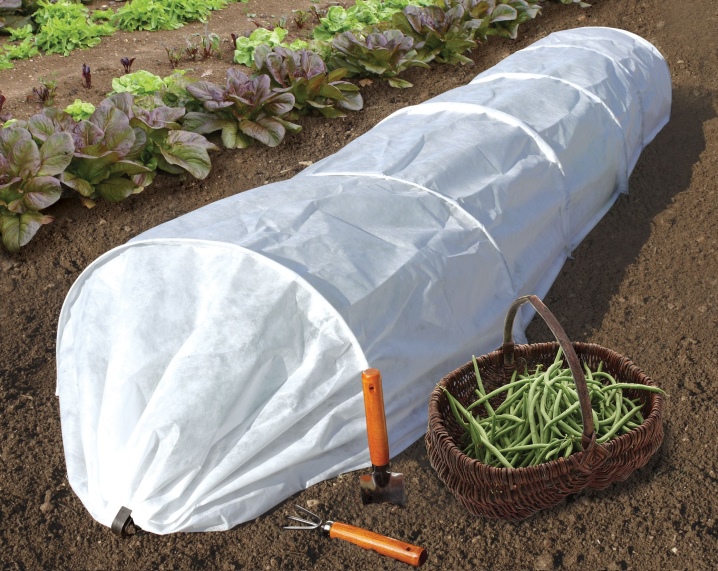
Views
Plastic wrap is traditionally used to cover plants. However, at present, many other types of covering sheets have appeared. And the polyethylene sheet itself has changed and improved.
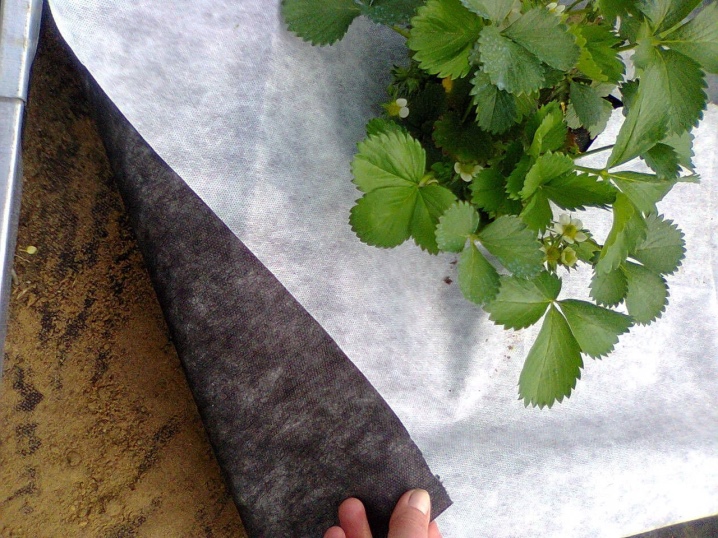
Polyethylene film
The film is of different thickness, which affects its strength and wear resistance. An ordinary film has the following characteristics: it protects from the cold, sufficiently retaining heat and moisture. However, it is not air permeable, has a waterproof effect, promotes condensation and requires periodic ventilation during use. Stretched over the frame, it sags after the rain.
Its service life is short - about 1 season.
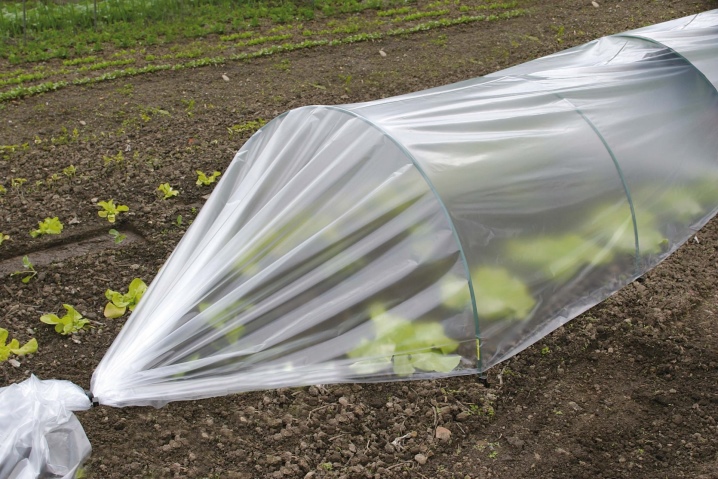
There are many varieties of plastic wrap.
- With light stabilizing properties. The additive in the form of an UV stabilizer makes it more durable and resistant to the negative effects of UV radiation. Such material is capable of retaining water and heat in the ground. The film is available in black and white: the white surface reflects the rays of the sun, and the black one inhibits the growth of weeds.
- Thermal insulation film. Its direct purpose is to preserve heat and protect against recurrent cold snaps in spring and night frosts. Such properties are more characteristic of a white or light green canvas: this film creates a microclimate 5 degrees higher than usual.
- Reinforced (three-layer). The middle layer of the web is formed by a mesh. Its threads are made of polypropylene, fiberglass or polyethylene and can be of different thicknesses. The mesh increases strength, reduces the ability to stretch, can withstand severe frosts (up to -30), hail, heavy rain, strong winds.
- Air bubble. The transparent surface of the film has small air bubbles, the size of which is different. The light transmittance of the film is the higher, the larger the size of the bubbles, but at the same time its mechanical properties are reduced. It has good thermal insulation characteristics: it protects crops from frost down to -8 degrees.
- PVC film. Of all types of polyethylene film, it has the highest strength and durability, it can serve even without removing it from the frame for about 6 years. It contains light-forming and stabilizing additives. PVC film transmits up to 90% of sunlight and only 5% of UV rays and is similar in properties to glass.
- Hydrophilic film. Its distinctive feature is that condensation does not form on the inner surface, and moisture, collecting in trickles, flows down.
- Film with a phosphor additivethat converts UV rays into infrared, which helps to increase yields. It comes in light pink and orange. Such a film can protect both from cold and overheating.

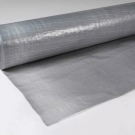


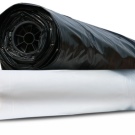
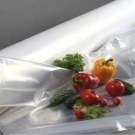
Non-woven covering material
This covering fabric is made of propylene. The material is produced in rolls of various sizes by different manufacturers, and there are several varieties of it, which are inherent in both the same and separate distinctive characteristics.
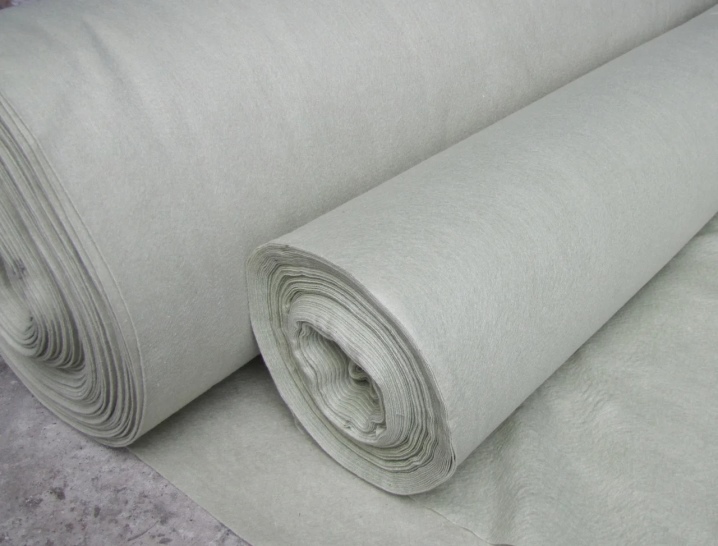
Spunbond
This is the name of not only the covering material, but also the special technology of its manufacture, which gives the shelter such properties as strength and lightness, environmental friendliness, and the inability to deform during temperature extremes.
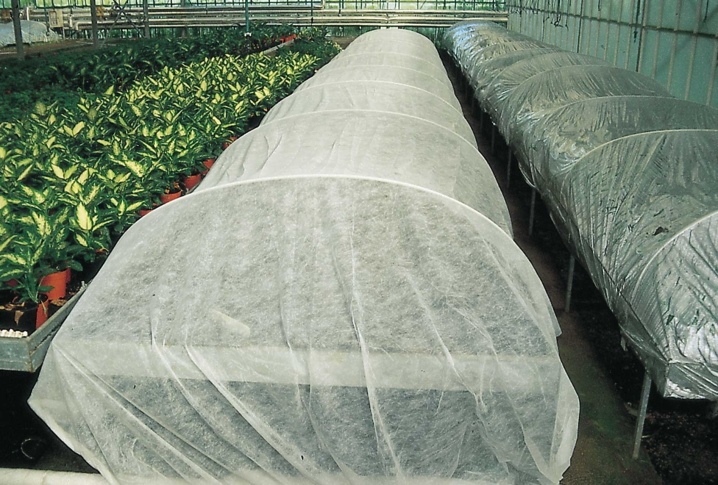
Its structure includes additives that prevent decay and the occurrence of fungal infections. The canvas is able to pass water and air well.
The scope of its application is quite wide, but it is especially in demand as a shelter for garden plantings.
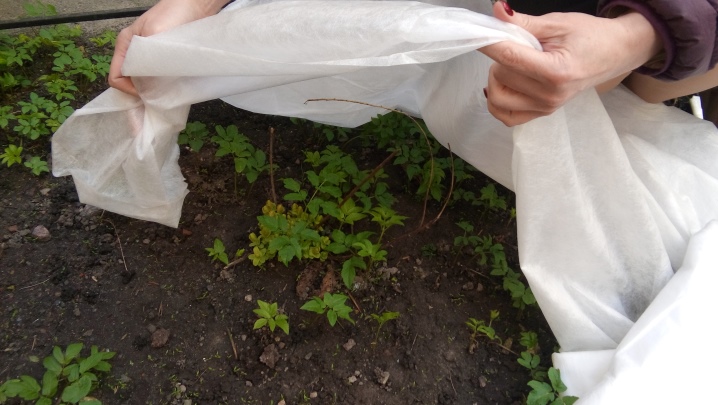
Spunbond comes in white and black. All types of plants are covered with white for the winter. Black has the addition of a UV stabilizer: this increases its operational and technical properties.
- Lutrasil. The canvas is similar in its properties to spunbond. Lutrasil is a very lightweight web-like material. It has elasticity, does not form condensation and has a different density. The scope of use is protection against frost and other adverse weather phenomena. Black lutrasil is used as a mulch and inhibits weed growth by absorbing sunlight.
- Agril. Differs in high water, air and light transmittance and warms the soil well. Under the agril, the soil is not crusty and erosion is not formed.
- Lumitex. The fabric has the ability to absorb and retain some of the UV rays, thereby protecting the plants from overheating. Good water and air permeability. Promotes earlier (by 2 weeks) ripening of the crop and its increase (up to 40%).
- Foil canvas. It is often used when growing seedlings. It is a highly breathable material that diffuses light evenly. The foil layer promotes the activation of photosynthesis, has a beneficial effect on the development and growth of plantings.
- Agrotechnical fabrics. The covering material, which has “agro” in the name, is agro-fabrics. The technology of their manufacture does not allow the use of herbicides during the use of the canvas. As a result, environmentally friendly products are grown. This is how most amateur gardeners work, since they grow crops for personal use.
Agro-fabrics slow down the process of evaporation of moisture from the soil, have good aeration properties, and create a microclimate favorable for plant development.
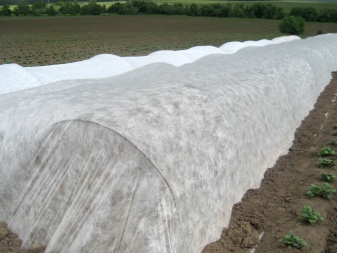

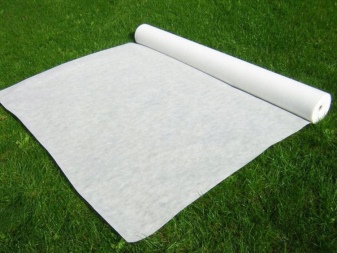
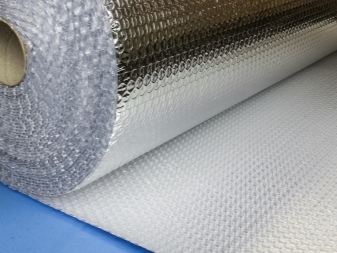
Agrofibre SUF-60
This type of nonwoven fabric is often used to cover greenhouses. The material protects crops from frost down to -6 degrees. Its characteristic feature is UV resistance.
The use of SUF-60 helps to increase the yield up to 40% without the use of herbicides.
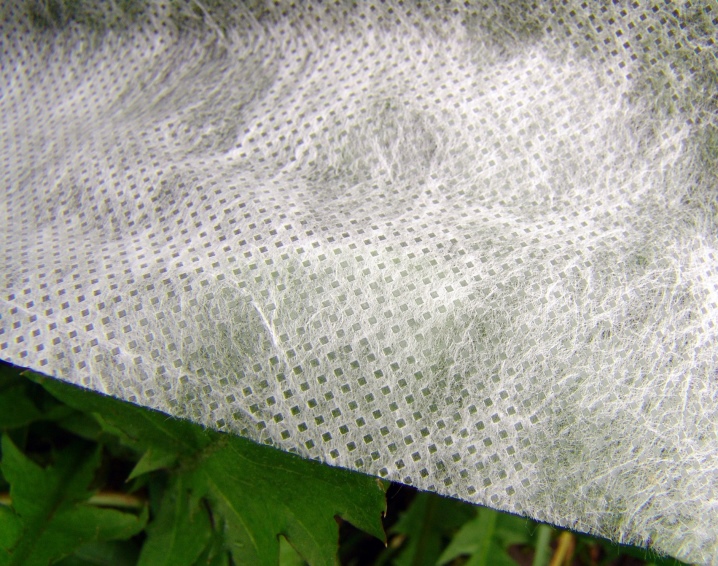
The carbon black contained in its composition is able to retain heat, evenly and in a short time warm the soil. Since the material is highly permeable to air and water vapor, condensation does not form on its surface.
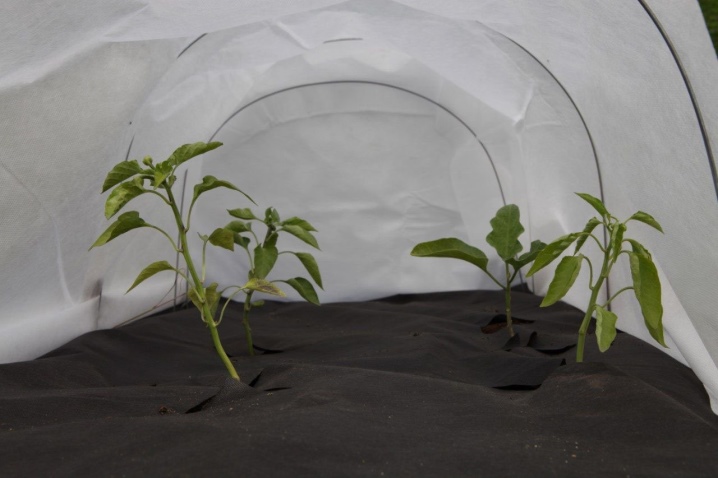
In addition, SUF performs the following functions: retains moisture, protects against pests (insects, birds, rodents), and is used as mulch. The material has a sufficiently high strength that it can be left on the ground for the whole winter.
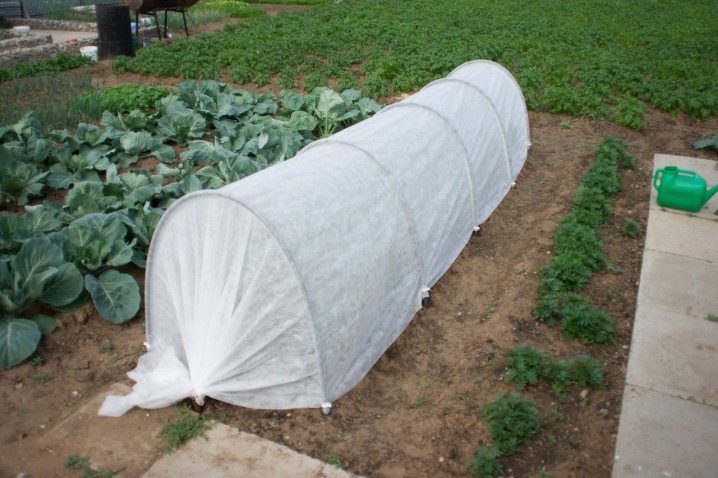
Agrospan has the same characteristics as agril, but it is more durable and longer operating time. Do not confuse the Agrospan covering canvas, which creates a microclimate for plants, and Isospan, which is used in construction to protect structures from wind and moisture.
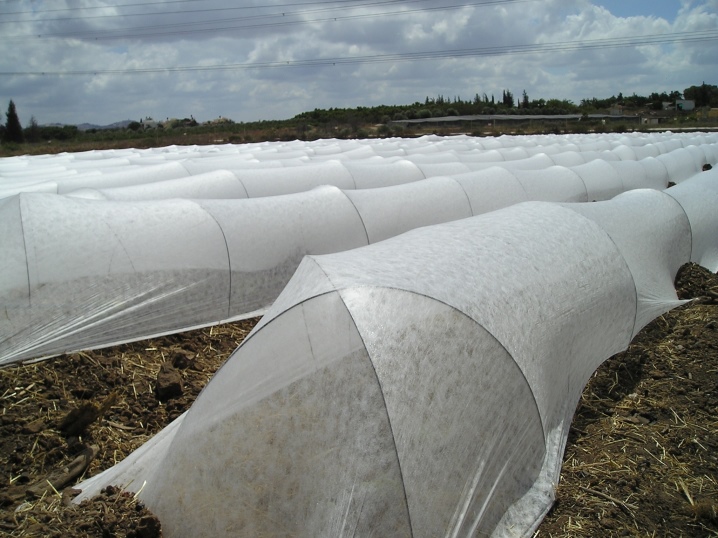
There are white and black nonwovens, which differ in scope. White canvas is used to shade the first shoots from bright sunlight, to cover greenhouses and greenhouses, to form a microclimate, as well as for winter shelter of plants.
Black linen, having other characteristics, is used to reduce water evaporation, enhance soil heating, to prevent weeds.
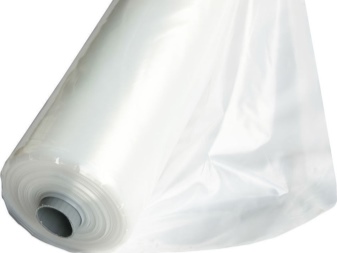

Two-layer nonwoven fabrics have different surface colors. The underside is black and it works as mulch.The upper surface - white, yellow or foil, is designed to reflect light and at the same time provide additional illumination of the plant under the shelter, accelerates the growth and ripening of fruits. Shelters with black-yellow, yellow-red and red-white sides have increased protective properties.
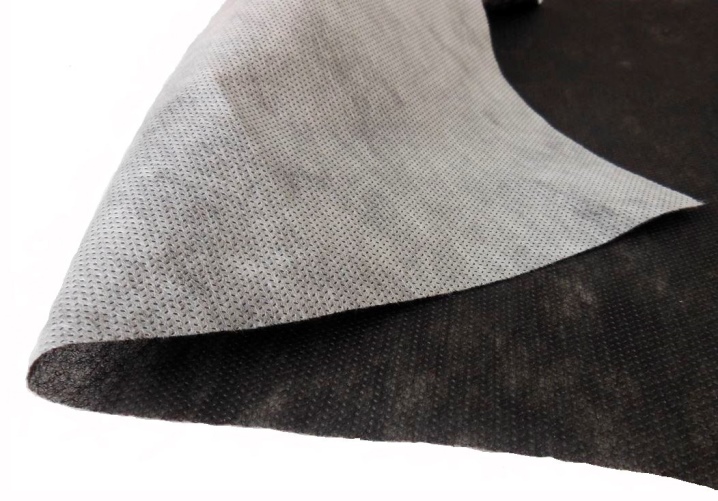
Polycarbonate
The material is used only for covering greenhouses and is the most durable and reliable shelter. It is a lightweight but very durable material that retains heat well and transmits light (up to 92%). It can also contain a UV stabilizer.
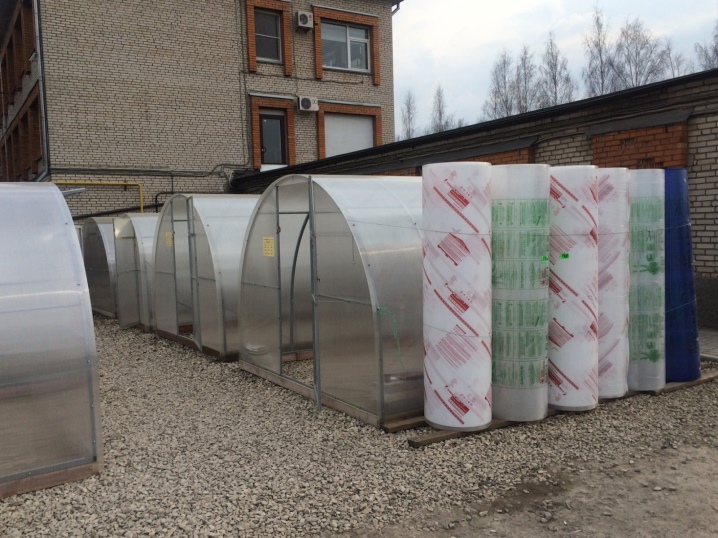
Dimensions (edit)
The covering material is usually found on the market in the form of a roll and is sold by the meter. The sizes can be very different. The width of the polyethylene film is most often from 1.1 to 18 m, and in a roll - from 60 to 180 m of the web.
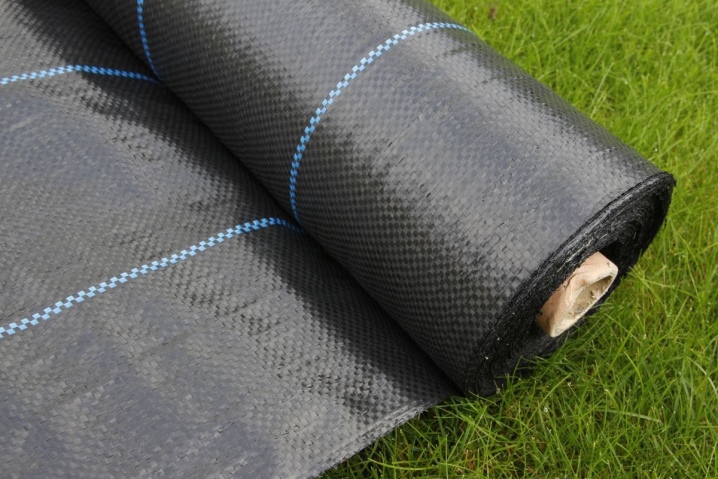
Spunbond can have a width of 0.1 to 3.2 m, sometimes up to 4 m, and a roll contains 150-500 m and even up to 1500 m.Agrospan most often has a width of 3.3, 6.3 and 12.5 m, and its length in a roll is from 75 to 200 m.
Sometimes the covering material is sold in the form of packaged pieces of different sizes: from 0.8 to 3.2 m wide and 10 m long.
Polycarbonate is produced in sheets with dimensions 2.1x2, 2.1x6 and 2.1x12 m.
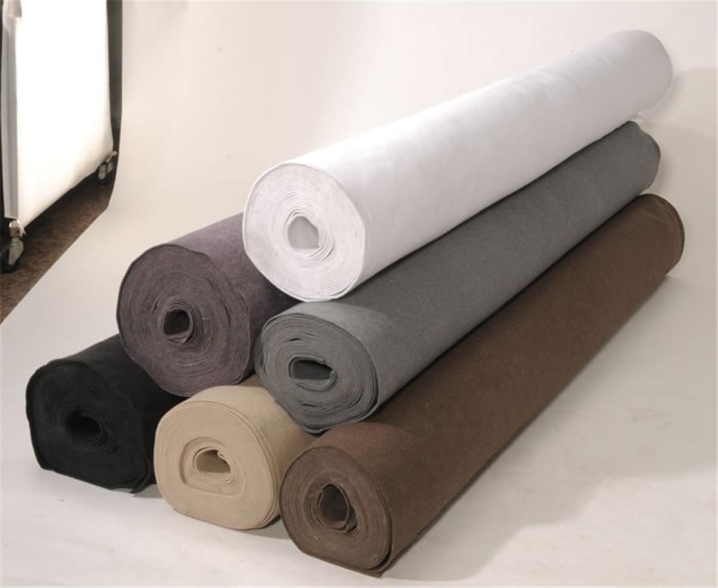
Density
The thickness and density of the covering fabric affect many of its properties and determine its functional application. The thickness of the web can vary from 0.03 mm (or 30 microns) to 0.4 mm (400 microns). Depending on the density, the covering material is of 3 types.
- Light. The density is 15-30 g / sq. m. This is a white canvas with a good level of thermal conductivity, water and air permeability, light transmission, able to protect from summer heat and low spring temperatures. It serves to shelter almost all cultivated plants growing on open soil, and it is permissible to spread it simply on plants.
- Medium density - 30-40 g / sq. m. A white sheet of this strength is usually used to cover temporary greenhouses and greenhouses made of arches, as well as for winter shelter of plants.
- Tight and thickest. The canvas is white and black. Its density is 40-60 g / sq. m. This type of material for covering plants often contains a stabilizer of ultraviolet radiation, which increases the duration of operation, and technical carbon, which gives it a black color.

White is used for covering frame structures and plant protection. Black is used as mulch.
The service life of such a canvas is up to several seasons.
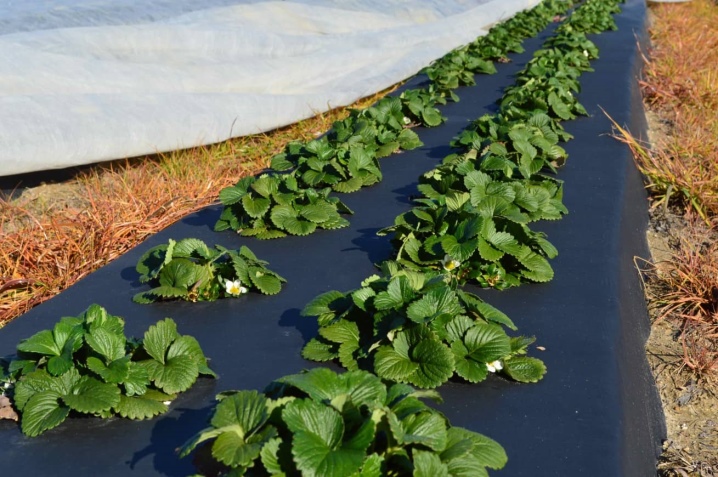
How to choose?
In order to correctly determine the choice of material for sheltering plants, several factors should be taken into account.
First of all, you need to decide for what purpose the material will be used.

- Polyethylene film it is better suited for warming up the soil at the beginning of seasonal work, and after planting plants - to retain moisture in the ground or to prevent the formation of excess moisture. After stable warm weather has been established, it can be replaced with a nonwoven fabric and used throughout the season.
- For lawn decoration, to enhance the growth of lawn grass, lutrasil, spunbond and other types of lightweight non-woven fabric are used, which cover crops immediately after planting.
- The purpose of using the material also depends on the color.because color affects the amount of heat and light absorbed and transmitted. A white cloth is needed to form a microclimate. To prevent the growth of weeds, it is necessary to choose a black canvas for mulching.
- Polyethylene black film can be used to grow strawberries. It is laid on the ground, making holes for the bushes. The black color, attracting the sun's rays, promotes faster ripening of the fruit.
- For covering near-trunk circles trees as mulching and decorative design, you should choose a green covering material.
- To cover plants for the winter you can choose any kind of dense nonwoven fabric.However, it must be borne in mind that plastic wrap is more suitable for covering greenhouses and greenhouses for the winter.
- For remontant raspberry bushes, which is cut for the winter, agrofibre is more suitable, under which condensation does not accumulate.
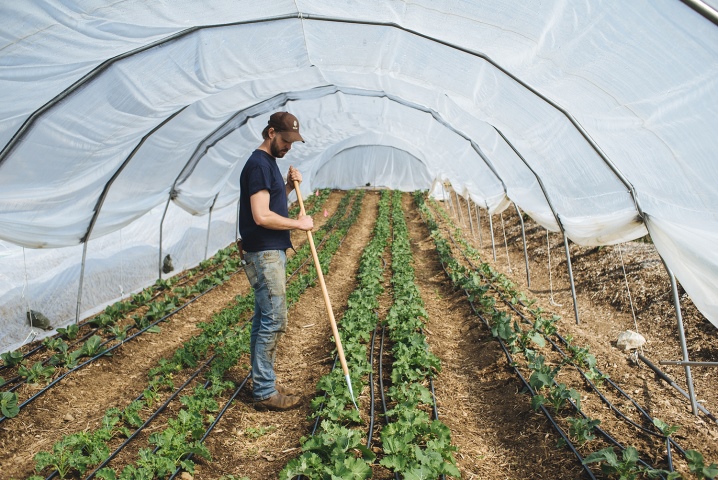
It is necessary to take into account the density of the canvas.
- Lightweight non-woven white material must be purchased for the garden when growing small species of plants (carrots, herbs, garlic and onions), as well as for young or weakened seedlings, choosing any type of canvas of the lowest density to simply cover the beds: the plants will be easy as they grow lift it.
- Medium density canvas is chosen for grown and matured seedlings, vegetable crops (tomatoes, zucchini, cucumbers), flowers grown in temporary greenhouses.
- The densest material must be purchased for sheltering permanent greenhouses, for young trees, conifers and other ornamental shrubs as a winter shelter. For example, white spunbond, spantex or agroSUF with a density of 30 to 50g / sq. m: mold does not form under this canvas, and the plants do not rot.
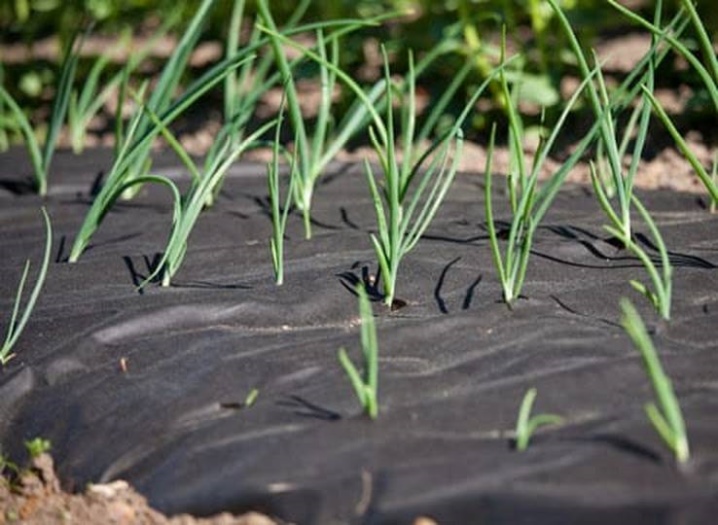
For use in those areas where there is a lack of warm and sunny days, when choosing, it is necessary to give preference to a material with the addition of a UV stabilizer: such a canvas compensates for the lack of heat. In the harsh northern regions, the best option would be to use foil cloth or bubble wrap.
Wear resistance is also important. The reinforced film will last longer.
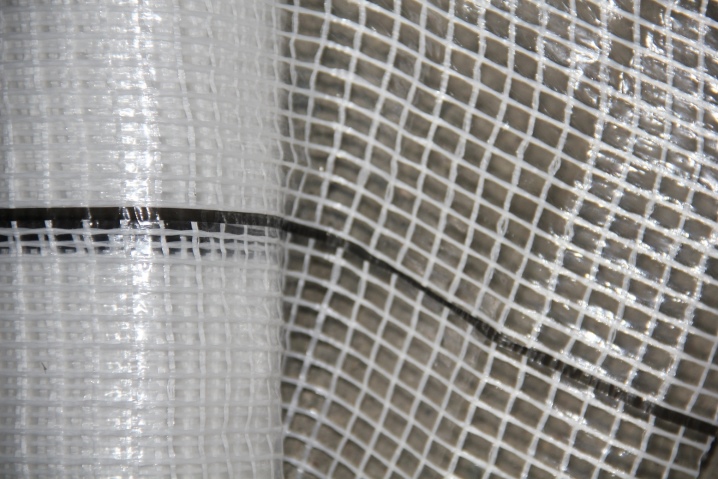
The quality of the product is another indicator that needs to be taken into account. The density of the covering material must be uniform. Inhomogeneity of the structure and uneven thickness are signs of a poor-quality product.

How to lay?
The easiest method of using a cover sheet is to simply spread it out on the garden bed. Recently, a method of growing strawberries and other crops on a covering material has become popular. The beds should be properly covered. When buying, you need to remember that the width of the canvas should be greater than the width of the bed, since the edges must be fixed to the ground.
Before you lay down a one-color canvas, you need to determine where its top and bottom are. A nonwoven fabric has one side smooth and the other rough and fleecy. It should be laid with the fleecy side up, as it allows water to pass through. You can conduct a control test - pour water on a piece of canvas: the side that allows water to pass through is the top.
Agrofibre can be laid on either side, as they both allow water to pass through.
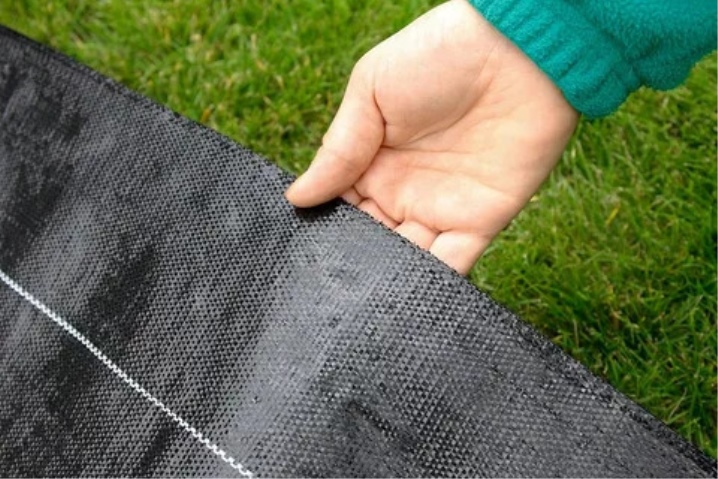
First, the soil in the garden bed is prepared for planting. Then the canvas is laid, straightened and securely fixed to the ground. The type of soil affects the way it is fixed. On softer soil, it should be fixed more often than on hard soil, after about 1-2 m.
For fastening, you can use any heavy objects (stones, logs), or simply sprinkle it with earth. However, this type of fastening has an unaesthetic appearance and, moreover, does not allow the web to be pulled evenly. Better to use special pegs.
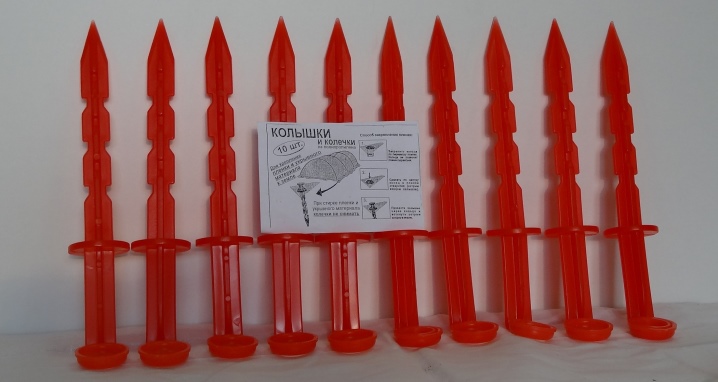
Having covered the bed, on the covering, they determine the places where the plants will be planted and make cuts in the form of a cross. Seedlings are planted in the resulting slots.
On arc temporary greenhouses, the covering material is fixed with special clamping holders, and is fixed to the ground using special pegs with rings.
A large and varied assortment of covering materials allows you to make the best choice in accordance with specific goals.
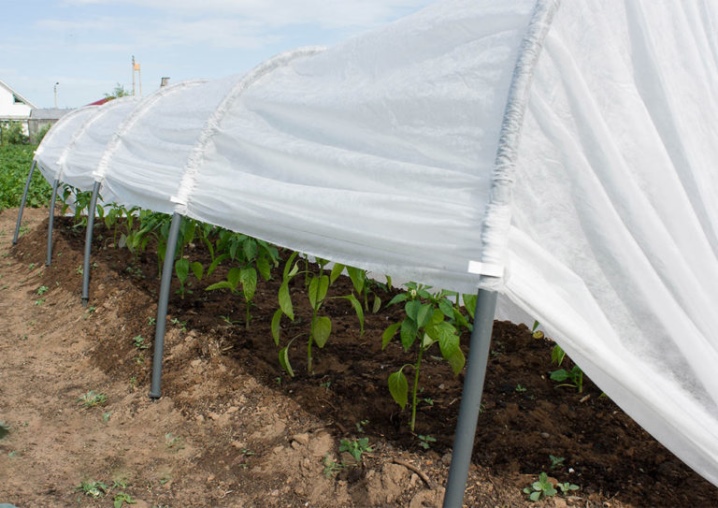
You can find out visual information about the covering material in the video below.



































































The comment was sent successfully.